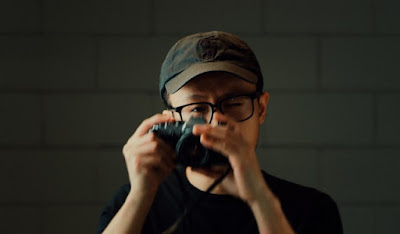The Psychological Depth of TinNgai Chan’s Mary Mary Quite Contrary
Every film is essentially about two relationships; the one we have with ourselves and the one we have with others. Perception is reality and filmmakers have the ability to introduce that perception in ways that make us see ourselves and others perhaps more genuinely than we do within our realities. TinNgai Chan’s Mary Mary Quite Contrary has been celebrated for its depiction of uncomfortability in the convergence of family and professional life, specifically for one therapist. This drama stars Chad Morgan as Mary Elson (of Michael Bay’s Oscar Winning Film Pearl Harbor and Primetime Emmy Winning TV Series Robot Chicken), Levi Holiman as Thomas Barette, Mikael Mattsson as John Elson, and Alaya Lee Walton as Elizabeth Elson. The story takes place in a therapist’s home office during a session with a patient which takes a turn for the worse, disintegrating the self-imposed borders constructed. In addition to its Official Selection status at the Silicon Beach Film Festival, Chandler International Film Festival, Fort Lauderdale International Film Festival, Hollywood Verge Film Awards, and others, Mary Mary Quite Contrary has garnered a deluge of awards and recognitions from across the world from the Canadian Cinematography Awards, European Cinematography Awards, New York Cinematography Awards, London Independent Film Awards, International Independent Film Awards, New York International Film Awards, Rome Independent Prisma Awards, and others. Clearly, there is something transfixing about Filmmaker TinNgai’s presentation of this tale of troubled people seeking a solution.
 |
| Cinematographer TinNgai Chan |
There’s no mistaking the use of a psychological approach to making this film about a therapist. The constructs we build in our own minds have come to life in a number of ways via TinNgai’s masterful use of the camera as our proxy in this film. He Describes, “The story is really about disconnected people trapped with themselves, and not sure how to reach out to each other. One way to put that on screen is through the spaces they’re in. Everything happens in a house so I tried to contain everyone in their own little room for as long as possible. We wanted to utilize all these line elements on the location, doors and windows, picture frames, edges of walls, and all this modern furniture with straight angles, to emphasize the empty space the characters carry around them.” The use of a wide lens and the lingering shots allows the audience to feel the weight of the spaces these characters inhabit. The near surreal qualities are evident from the first scene in which Mary the psychiatrist appears quite small in the corner of the room, next to a little window but surrounded by the seemly huge chair and wood cabinets as she speaks to a patient who has locked himself in her bathroom. In this opening scene, the idea is expressed that when people feel trapped in a mundane life with themselves, even furniture can seem as massive as a mountain. Contrastingly, the scene at the end of the film in which we learn that Mary is not in truth who she presents to others, at least not in her own heart, the filmmaker expands the idea of personal spaces into the very mind of this psychiatrist. This awareness of inner and outer perspective was highly relatable for TinNgai Chan who served as both director and cinematographer for the film. He relates how these two roles on a film required him to separate himself.
 |
| Behind the scenes of Mary Mary Quite Contrary |


